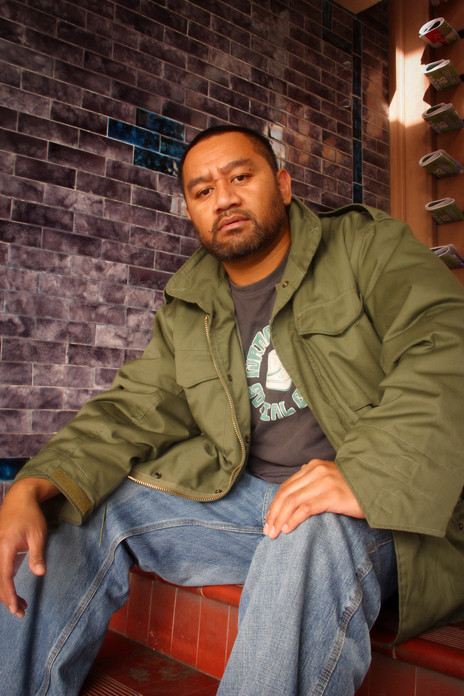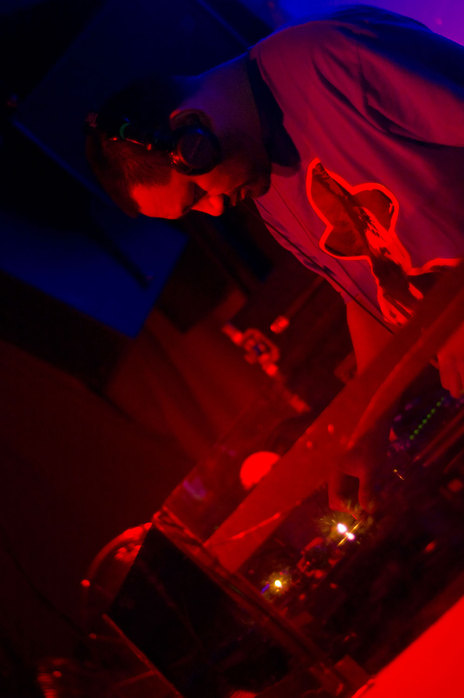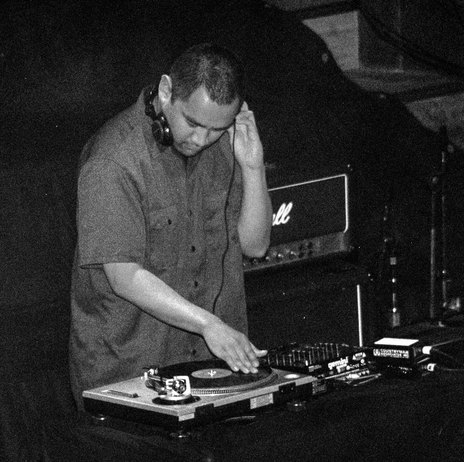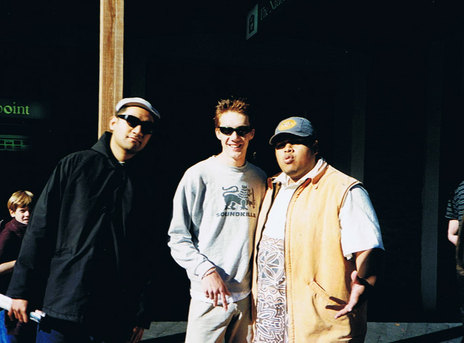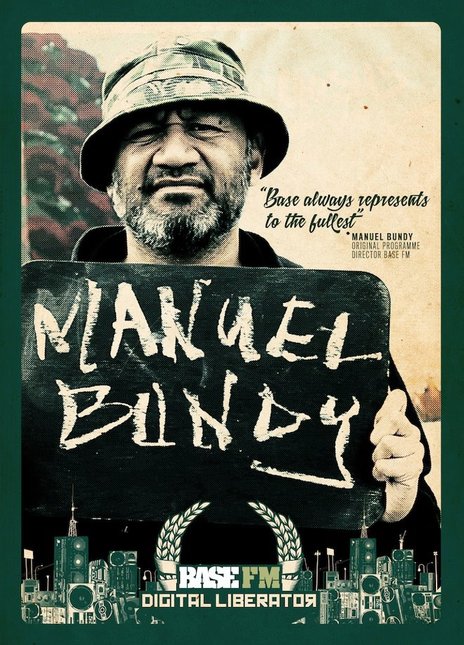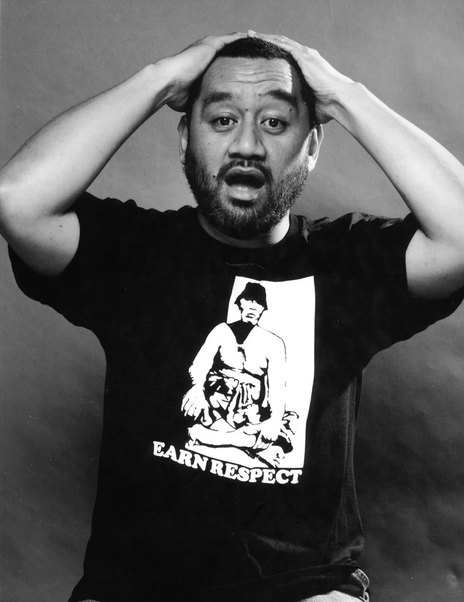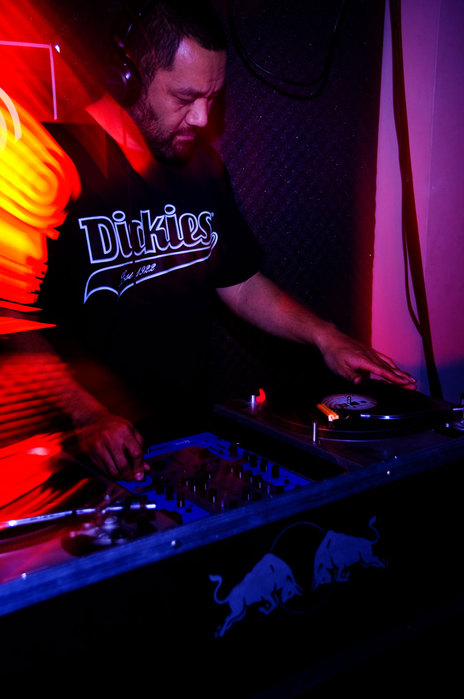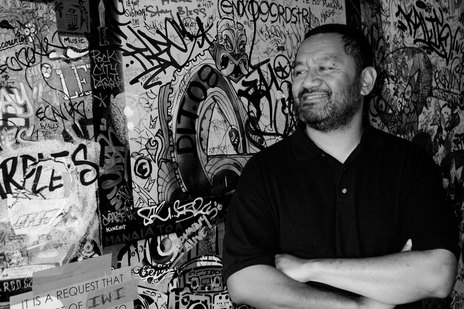Roots
Manuel’s early musical education was pretty traditional. “I started piano lessons in form one. I did it for about three years but I wasn't really into it. It was just boring scales and learning old tunes that kind of put me to sleep. So I couldn't be bothered with the lessons to be honest. I did sit music for School Certificate and was top of the class.”
Manuel eventually dropped the keys for turntables: “The first time I played to a crowd or a dancefloor was in August 1987 at St Therese church in Mangere East, my mum's church – the same month that I got kicked out of school. Some schoolmates who were also budding DJs organised the party but they told me to come along cos they knew I had a few records. I ended up playing most of the night ... I didn't even have turntables then. I didn't get my own pair until 1992.”
He began collecting records in 1984, during his fourth form year at school. “I grew up in South Auckland and in Otahuhu there was this record shop called Gemini Records and the guy that ran the record store, Steve Fawlkner, he released a compilation called Street Music around 1983, and that had a lot of the breakdancing tracks on it. It was one of the first locally produced compilations of hip-hop/urban music. His record shop had all the jams, imports from the States and the UK, it was a wicked store but no one really knew about it. It was definitely an important store for us back then. He had better records than in town.” (Back 2 Basics, Aug/Sept, 2004.)
Manuel was also exposed to a lot of music by his older brother who put him on to ‘Rappers Delight’, ‘The Message’ and early electro compilations.
“It was Roseti Tanoi (ex-doorman at Berlin and the Box ... RIP) who put me onto that tape. I was friends with his younger brothers and we all went to the same church and school. Our families were very close. So when I hung out at their house he put us on to a lot of music when we were pre-teens. He was kind of an elder to us young kids.”
When he was young, Manuel was also exposed to a lot of music by his older brother who put him on to ‘Rappers Delight’, ‘The Message’ and early electro compilations. “He was also a keen clubber in the early 80s, and would tell me about spots in town like the Peppermill, Chasers and Bonds.”
Roger Perry and the inner-city scene
Manuel says “In the early days I was only into collecting records. Taking up DJing didn't even cross my mind until I saw Roger Perry play, at the Asylum, and the Playground. I already knew the tunes and had a pretty decent amount of records and some musical sense, so everything sort of came together at the right time.”
He recalls the music he heard Roger play was a bit of everything – rap, early forms of house, old funk like James Brown, and it went with the crowd – people from town and people from South Auckland like Manuel. “It was a mixed bag of people, and the music was a mixed bag as well.”
He started mixing compilations of some electro tunes and “then I started playing around with my Dad’s three-in-one, practising little cuts. I first got into clubbing and understanding more about club DJs around 1985/86, listening to DJs like Simon Grigg and Roger Perry.” (Pavement, Aug/Sept, 1998)
Manuel describes his main DJ influences as “Roger Perry and DJ Subzero. Listening to Roger spin really inspired me to have a proper go at it. And Nigel Mu (Sub-Zero) influenced me in a technical sense. The bro was/is an absolute freak on the decks in terms of cutting, scratching and mixing. I pretty much changed my whole approach to beat-mixing after hearing him play. Nigel went by Nasty Nige back in the day. I gave him the name Sub-Zero when he was looking for a name change.” He also name checks Cian as an important influence.
"We changed our last names to those of famous serial killers, and I ended up with [Ted] Bundy.”
– Manuel Bundy
Manuel got his DJ name from a party night in 1988: “I did a gig called The Terrordome with Sam Hill at The Siren in High St. We changed our last names to those of famous serial killers, and I ended up with [Ted] Bundy.” (NZ Musician, Oct/Nov, 2003.)
Manuel says “from about 1988 I did a few parties here and there, sometimes tagging along with Sam Hill. We then hooked up with Jason Miller who ran the Dance to Rule parties and we did those, like Rule The Track. I also did Summer Jam at the Siren for Marvin Satele (RIP) which was my first gig in one of Simon Grigg's clubs.”
High Street
Manuel started the first hip-hop weekly residency in Auckland in 1990, at De Bretts in High St, back when hip-hop was still battling to get a foot in the door, especially at clubs. “In 1989 Mike Riordan, who was bar manager at Shortland Bar at De Bretts, asked me to DJ at their Xmas party,” says Manuel, “and the following year I became resident DJ at Shortland Bar, playing four nights a week, ‘til 1993.” He was at the Shortland Bar four nights, a week, playing from 5pm ‘til 10 or 11pm.
Manuel later held down residencies at Siren and Cause Celebre (1994-96). He noticed that when the Siren turned into the Box, it became more house and garage. “Then there was the hip-hop thing from the 90s, where a lot of guys went strictly hip-hop. It just happened that way. I was always into playing everything, all sorts of music, which is why I couldn't find a place to fit in.”
After the Shortland Bar closed in 1993, he couldn’t find a gig – Manuel wasn’t too fussed, and was happy to have a bit of a break. He ended up going over to Sydney four or five times a year – there weren’t that many clubs in Auckland back then. He was getting into the sounds coming out on Mo Wax, Ubiquity and Ninjatunes – and that didn’t really suit the R&B crowds.
Manuel started getting regular DJ work at Cause Celebre after being invited down by the resident DJ Gerhard Pierard to help him out and play some tunes on the night U2 booked out the club for their concert afterparty.
British DJ Paul Oakenfold was in attendance (he was touring as part of U2’s line-up, and he DJ'd at the Box next door, $5 entry) and was suitably impressed by Manuel’s selections and asked him for a mixtape.
Manuel went home and made him up a tape and went down to De Bretts (where they were staying) to drop it off and looked and looked, but couldn't find Oakenfold anywhere. So he saw Mick Jones (also touring with U2 in BAD) in one of the bars playing pool, and asked him to give the tape to Oakenfold. He never found out if the tape reached Oakenfold or not.
At Celebre, Manuel would often play before the band came on, and as the band started playing they’d play over his last song and then they’d jam and he’d start having a little scratch over the top of the band, throwing in some vocal cuts. That led to him being incorporated into some of those bands, working with the likes of Nathan Haines.
We r The OMC
In 1997 he was pulled in by Pauly Fuemana (OMC) as DJ for Pauly’s band when OMC took off touring the world on the back of the huge global success of ‘How Bizarre’.
Manuel remembers that “Pauly used to go to De Bretts where I used to DJ and he was like ‘bro, if I make it big, I’ll get you to DJ!’ and I was like ‘Yeah, whatever’, and the next moment I was like ‘aw shit!’ I only scratched on one track (‘Lingo With The Gringo’) for the [OMC] album, but it was good to be part of the tour band.” (Back 2 Basics)
“When I got to know him better in later years he told me, 'Bro, we used to steal cars so we could drive to town and hear you play'... ha ha. Classic.”
Manuel recalls that Pauly was really into what Nathan Haines was doing live at Celebre, and he tried to incorporate that into his live set. “Pauly could have done that tour with a DAT tape and a few backup singers, but he wanted to bring us onboard and make a show of it, which was wicked, it was a privilege."
“That tour started from the Big Day Out 97, we did the whole [BDO] tour, and it went all the way to September. It was a tough tour. We were playing every day, and travelling. It was cool. I got to see the world. It opened me up to pop music, and the machine, just how they just work you to the bone. If you've got a hit single, they’ll just rinse everything out of you.”
Manuel recalls some entertaining moments on that tour: “We did [the TV show] Good Morning America, and [show co-host] Regis talked to me! I was wearing a bowler hat, and he asked about the hat, on the show. It was surreal. He talked to me, out of everyone in the band and asked ‘where did you get the hat from?’ I said ‘Ah, at an opshop in Denver.’ And he was like ‘the hat makes the band!’ I flew my missus over to New York and she was in the hotel room watching going, ‘Ah, I can't believe this.’ It was crazy."
"He was like this Polynesian Elvis from outer space!"
“The one thing about Pauly – there was that classic tall poppy syndrome, a lot of people dissed ‘How Bizarre’, a lot of the hip-hoppers – but no one analysed it, and thought 'why was it a hit?' It’s because the way he looked, people didn't know where to put him. We did the alternative circuit, through all the universities, ‘cos they didn't know where to put him. That’s why it was a hit."
“He was like this Polynesian Elvis from outer space! He always dressed like that. I remember we did this Italian TV show, and their stylists were just watching him, and talking to themselves, going ‘Who is this guy? What a great look!’ And he’s there in his Gucci loafers with an Island cravat. The dude had mad style. And it was totally Pacific.”
Manuel says one of the best parts of that tour was he had to DJ before each set. “I opened each show playing a 30-minute set. So the crowds varied from small clubs in rural America to big venues in Europe.” When OMC played in Denmark at the Roskilde Festival, he got to DJ to around 17,000 people, which was a big buzz for him. “The opening DJ sets was kind of a last minute thing. The actual show wasn't that long so to stretch it out I ended up opening every night.”
"Meeting those jazzers opened my mind up to other music as well.."
“Before that I did national tours with Urban Disturbance – filling in for Rob Salmon, cos he was resident at the Box, Nathan Haines, New Loungehead and Mark de Clive-Lowe. The jazz connection came about through my residency at Cause Celebre. It’s probably my favourite place to have played at, to be honest. It was the Mo Wax, Ubiquity Records, Ninjatunes era. Meeting those jazzers opened my mind up to other music as well, and in a way I opened them up to hip-hop music a la Tribe Called Quest, Gangstarr and so on.”
Manuel ventured into recording in the mid 1990s, adding scratches and cuts to releases by Nathan Haines, Mark de Clive-Lowe, Nuvonesia, Sola Rosa, Relaxomatic Project, Dam Native (on ‘Behold My Kool Style’ and ‘Horrified One’), Soane, King Kapisi, Tim Finn, Ermehn, Breaks Co-Op and others. His co-production credits include tunes by Urban Disturbance (Manuel came up with their name when they wanted to change from their original moniker Leaders of Style), Ermehn, King Kapisi, Del Ray System and Mark de Clive-Lowe.
Manuel was brought in to scratch ‘Six Months In A Leaky Boat’ in the bridge of the song.
His experience recording with Tim Finn was for a song done for New Zealand cricket, called ‘Runs In The Family’. Manuel was brought in to scratch ‘Six Months In A Leaky Boat’ in the bridge of the song. While in the studio, Manuel recalls “at the end of the song Tim was looking for an idea to end it. I said ‘Why don't you do the whistle part in 'leaky boat'?’ and he says "great idea... I know what, why don't you do it?" So he told me to go in the booth and I ended up whistling on the track.”
Solephonic, remixes and awards
Manuel’s remixes have won acclaim – his remix of Che Fu’s ‘Misty Frequencies’ won an award at the B-Net Awards in 2002. He had previously won three B-Net Awards – Breakbeat DJ award (1998), Hip-hop DJ award (1999), and DJ Of The Year (2000).
Manuel has contributed to a number of recordings on the Sugarlicks label and released his debut solo EP with them in 2007, as Manuel Bundy presents Solephonic. Prior to that solo release, he and Andy ‘Submariner’ Morton had produced several tunes, working under the name Combinations.
In 2004 Manuel was hired by GeorgeFM as programme director for their new station BaseFM. He managed to draw a lot of great DJ talent into the station, simply on the basis of his name. That’s a mark of the level of respect he holds within the DJ community in Auckland. Manuel was instrumental in helping get the station off the ground and worked there for a few years before moving on (the station is now independently owned).
Manuel is part of the DJ trio known for the long-running monthly club night The Turnaround (which kicked off in 2003), alongside DJs Cian and The Submariner. Wherever you find Manuel spinning, there’s bound to excellent selections across multiple genres, smoothly mixed to perfection, because that’s how Manny Styles rolls.
